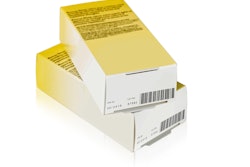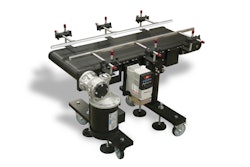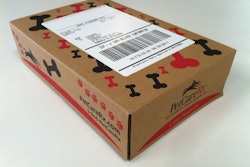1. Define where on the package you want to print. As in real estate, the three most important factors here are location, location, location. Whether it’s on a top flap, one end flap, or both end flaps, the physical location of the code will make a huge difference in cost, whether you need to make a label change, and even whether you need to change the size of your shipping case. It can also have huge implications for aggregation. (As an example, one pharma manufacturer was printing a 2D code for a temperature-sensitive product on the side of a folding carton, which was causing a lot of aggregation issues, so they moved it to the end flap. But that required a slightly bigger carton, which in turn required a slightly bigger shipping case, which in turn required the revalidation of the entire cold chain.) Some aggregation schemes call for printing a separate 2D code on the top or bottom of each bottle in order for a camera to capture an entire tier of bottles as they are being put into a case (or through a clear-film shrink bundle) for a higher degree of aggregation integrity.
2. Specify exactly what’s going to be on the label. Prepare a label schema document for your coding/marking vendor that specifies exactly what elements are to be printed. You should also endeavor to have a drawing or rendering of what the finished, printed label should look like, including size of the 2D DataMatrix code, font size for human-readable text, and so forth.
3. Printing on round bottles is problematic. Printing on a flat, true surface is always better than printing on a curved surface. A flat surface, such as found on square containers, provides a consistent throw distance for ink-jet coding systems. Since round bottles are more common than square, most companies avoid this altogether by printing the serialization code directly onto the label while it is still on the label web, rather than onto the bottle itself. This typically allows for excellent web control and consistency, leading to a more reliable and consistent code—regardless of whether the coding technology is ink-jet or laser ablation. Other options are printing on the top or bottom of bottles, though real estate can be trickier here.
4. Assess whether your existing coding equipment is serialization-ready. The trick here is not in the printing of a 2D code, as even printers upwards of eight years old can do that. To be truly serialization-ready, a printer must have two-way communications built in—to be able to receive as well as transmit information, all without impacting existing line speeds. As a general rule of thumb, printers five years old or newer are more likely to be serialization-ready. Some newer laser systems are serialization-ready as well. One gotcha: Continuous ink-jet technology (CIJ) is typically not serialization-capable due to print quality limitations.






















